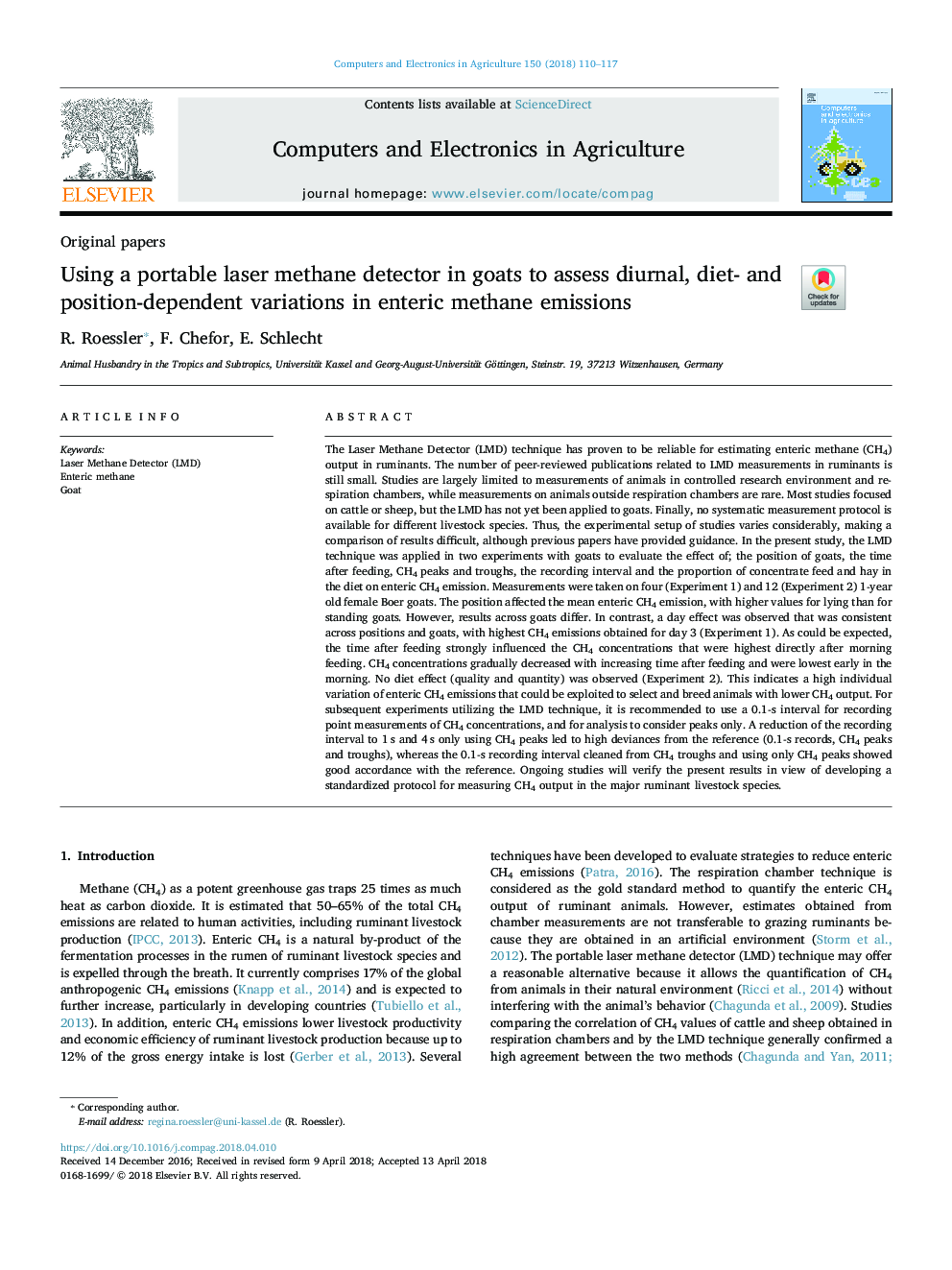| کد مقاله | کد نشریه | سال انتشار | مقاله انگلیسی | نسخه تمام متن |
|---|---|---|---|---|
| 6539358 | 1421098 | 2018 | 8 صفحه PDF | دانلود رایگان |
عنوان انگلیسی مقاله ISI
Using a portable laser methane detector in goats to assess diurnal, diet- and position-dependent variations in enteric methane emissions
ترجمه فارسی عنوان
با استفاده از یک آشکارساز متان لیزری قابل حمل در بز ها برای ارزیابی تغییرات روزانه، رژیم غذایی و موقعیتی در انتشار گازهای متان
دانلود مقاله + سفارش ترجمه
دانلود مقاله ISI انگلیسی
رایگان برای ایرانیان
کلمات کلیدی
موضوعات مرتبط
مهندسی و علوم پایه
مهندسی کامپیوتر
نرم افزارهای علوم کامپیوتر
چکیده انگلیسی
The Laser Methane Detector (LMD) technique has proven to be reliable for estimating enteric methane (CH4) output in ruminants. The number of peer-reviewed publications related to LMD measurements in ruminants is still small. Studies are largely limited to measurements of animals in controlled research environment and respiration chambers, while measurements on animals outside respiration chambers are rare. Most studies focused on cattle or sheep, but the LMD has not yet been applied to goats. Finally, no systematic measurement protocol is available for different livestock species. Thus, the experimental setup of studies varies considerably, making a comparison of results difficult, although previous papers have provided guidance. In the present study, the LMD technique was applied in two experiments with goats to evaluate the effect of; the position of goats, the time after feeding, CH4 peaks and troughs, the recording interval and the proportion of concentrate feed and hay in the diet on enteric CH4 emission. Measurements were taken on four (Experiment 1) and 12 (Experiment 2) 1-year old female Boer goats. The position affected the mean enteric CH4 emission, with higher values for lying than for standing goats. However, results across goats differ. In contrast, a day effect was observed that was consistent across positions and goats, with highest CH4 emissions obtained for day 3 (Experiment 1). As could be expected, the time after feeding strongly influenced the CH4 concentrations that were highest directly after morning feeding. CH4 concentrations gradually decreased with increasing time after feeding and were lowest early in the morning. No diet effect (quality and quantity) was observed (Experiment 2). This indicates a high individual variation of enteric CH4 emissions that could be exploited to select and breed animals with lower CH4 output. For subsequent experiments utilizing the LMD technique, it is recommended to use a 0.1-s interval for recording point measurements of CH4 concentrations, and for analysis to consider peaks only. A reduction of the recording interval to 1â¯s and 4â¯s only using CH4 peaks led to high deviances from the reference (0.1-s records, CH4 peaks and troughs), whereas the 0.1-s recording interval cleaned from CH4 troughs and using only CH4 peaks showed good accordance with the reference. Ongoing studies will verify the present results in view of developing a standardized protocol for measuring CH4 output in the major ruminant livestock species.
ناشر
Database: Elsevier - ScienceDirect (ساینس دایرکت)
Journal: Computers and Electronics in Agriculture - Volume 150, July 2018, Pages 110-117
Journal: Computers and Electronics in Agriculture - Volume 150, July 2018, Pages 110-117
نویسندگان
R. Roessler, F. Chefor, E. Schlecht,
